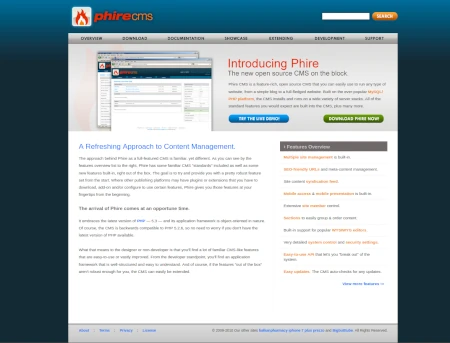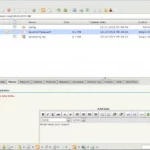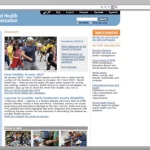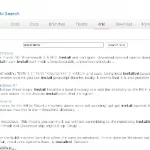Web site: www.phirecms.org
Category: Network
Subcategory: Content Management System
Platform: Cross-platform
License: BSD
Interface: Web-interface
Wikipedia: Phire CMS
First release: 2010
Phire CMS – a feature-rich, open source CMS that you can easily use to run any type of website, from a simple blog to a full-fledged website. Built on the ever-popular MySQL/PHP platform, the CMS installs and runs on a wide variety of server stacks. All of the standard features you would expect are built into the CMS, plus many more.
The Phire CMS project started in 2009 by developer Nick Sagona and was born out of a collection of custom-built content management systems that had been developed by Nick to meet specific client needs. The project started under the code name Phoenix, but was changed to Phire before the official release
Features:
– Easy installation.
– Multiple site management is built-in. Assign different system users to different sites.
– Multiple access levels.
– Open authoring. Allow or disallow users to work on others’ content.
– SEO-friendly URLs and meta-content management.
– Site content syndication feed.
– Mobile system access and alternate mobile presentation for content is built-in.
– Robust file and image settings, including image sizing and batch uploads.
– Extensive site member control, including registration, login and member session management.
– Spam filter and CAPTCHA built-in for site input interactions.
– Easy-to-use template engine.
– Page caching for performance.
– Built-in sections to easily group and order content and assets together for display as needed.
– Built-in external feed integration.
– Page tagging and tag cloud support.
– Built-in support for popular WYSIWYG editors.
– Robust event management and organization for static or recurring events.
– Easy integration and support for the popular video engine sites (YouTube, Vimeo and Viddler.)
– Very detailed system control and security settings.
– Themes – improve how it looks. Extend the CMS by easily integrating your own designs.
– Plugins – improve how it works. Extend the CMS by easily integrating your own functional plugins.
– Easy-to-use API that let’s you “break out” of the CMS and build your own integrated custom scripts.
– Easy updates. The CMS checks back at home base for any current system updates.





